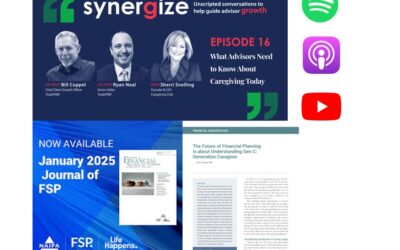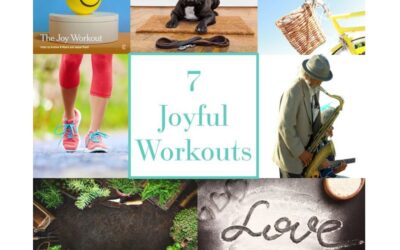 While Saturday marked the first official day of fall, this whole season is the kick-off to Falls Prevention Awareness. Falls – whether they happen in the home or just getting around town – are the leading cause of fatal and non-fatal injuries for older Americans. According to the Centers for Disease Control and Prevention (CDC), 1 in every 3 Americans over age 65 suffers a fall and more than 18,000 seniors die every year from a fall-related incident. Whether the fall results in a hip fracture, a head injury or other physical problem, more than 2.3 million seniors age 65+ were treated in ERs across the country with a non-fatal fall injury with more than 662,000 of those cases resulting in hospitalizations.
While Saturday marked the first official day of fall, this whole season is the kick-off to Falls Prevention Awareness. Falls – whether they happen in the home or just getting around town – are the leading cause of fatal and non-fatal injuries for older Americans. According to the Centers for Disease Control and Prevention (CDC), 1 in every 3 Americans over age 65 suffers a fall and more than 18,000 seniors die every year from a fall-related incident. Whether the fall results in a hip fracture, a head injury or other physical problem, more than 2.3 million seniors age 65+ were treated in ERs across the country with a non-fatal fall injury with more than 662,000 of those cases resulting in hospitalizations.
The concern for caregivers is only half of those older Americans who have fallen report it to their health care professional or family caregiver. Often your older loved one may not realize the extent of their injury after taking a tumble.
Former First Lady Nancy Reagan has had some recent falls that are impacting her health and ability to stay engaged in the activities she loves. In 2008, she suffered a fall and was hospitalized for a few days and then a few months later fell again and broke her pelvis. She did not realize she had the break until persistent pain finally caused her to see a doctor where the fracture was discovered. Then earlier this year she fell again and broke several ribs missing an event at her beloved Reagan Presidential Library. 
If you are a caregiver for an older loved one, there are several things you can do to help prevent mom or dad from falling at home:
1. Vitamin D
According to the U.S. Preventive Services Task Force, its report found taking 800 I.U.s of Vitamin D daily will reduce fall risk by 17 percent. You can also get Vitamin D through nutritious eating such as Omega 3 fatty acids found in salmon or walnuts or drinking nutrient-rich milk, and even 10 minutes of sunshine a day will help build strong bones to help reduce falls.
2. Clear the clutter and add grab bars
Remove piles of newspapers, magazines or other obstructions from hallways to keep pathways in the home clear. In addition, ensure sturdy, professional grab bars (not flimsy towel bars) are installed in your loved one’s bathroom and bath tub/shower area. There are great looking designer bars from Great Grabz.
3. Vision
Ensure your loved one’s vision is good and keep eyeglass prescriptions up-to-date. Eye issues such as glaucoma or cataracts can make a loved one more at risk for falls.
4. Check medications
Often prescriptions, both doctor prescribed and over-the-counter (OTC), can be the culprit in making your loved one drowsy or dizzy and can lead to a fall. Ask your loved one’s doctor or local pharmacist to advise if any prescriptions may put your loved one at risk for falling.
5. Embrace technology
GSP-enabled devices such as Personal Emergency Response Systems (PERS) are designed to look like watches, belt clips and lavalieres, as well as cell phones with special services such as Great Call’s Jitterbug with 5-Star Emergency Response, can help alert you automatically when a loved one has fallen and cannot get up.
6. Improve core strength
Help your loved one build strength through exercise like tai chi or a senior exercise program such as Silvers Sneakers or Silvers & Fit offered at many fitness clubs nationwide.
In addition, the National Council on Aging (NCOA) has created information about falls risks, myths and other educational information. At thousands of senior centers located in towns across the country, NCOA has provided materials for falls risk screenings and falls prevention presentations available to all seniors and their family caregivers. To help assess a senior’s fall risk potential and find out ways to help improve balance, flexibility and strength, senior centers and other community-based organizations serving older adults across the U.S. are offering programs like A Matter of Balance and Stepping On, along with Tai Chi: Moving for Better Balance classes.
“When an older adult falls, it can begin a cascade of events affecting quality of life, including a loss of independence, reduced mobility, and even earlier admission to a nursing home,” said Lynn Beattie, vice president of Injury Prevention with NCOA, which leads the National Falls Free™ Initiative. “An injurious fall can also affect caregivers, family members, and even entire communities. But the good news is that falls are largely preventable.”
For caregivers, a senior loved one’s loss of mobility can mean not only increased hours for caregiving but also increased stress and anxiety over their loved one’s future independence and safety.
Celebrate fall by preventing falls.




0 Comments